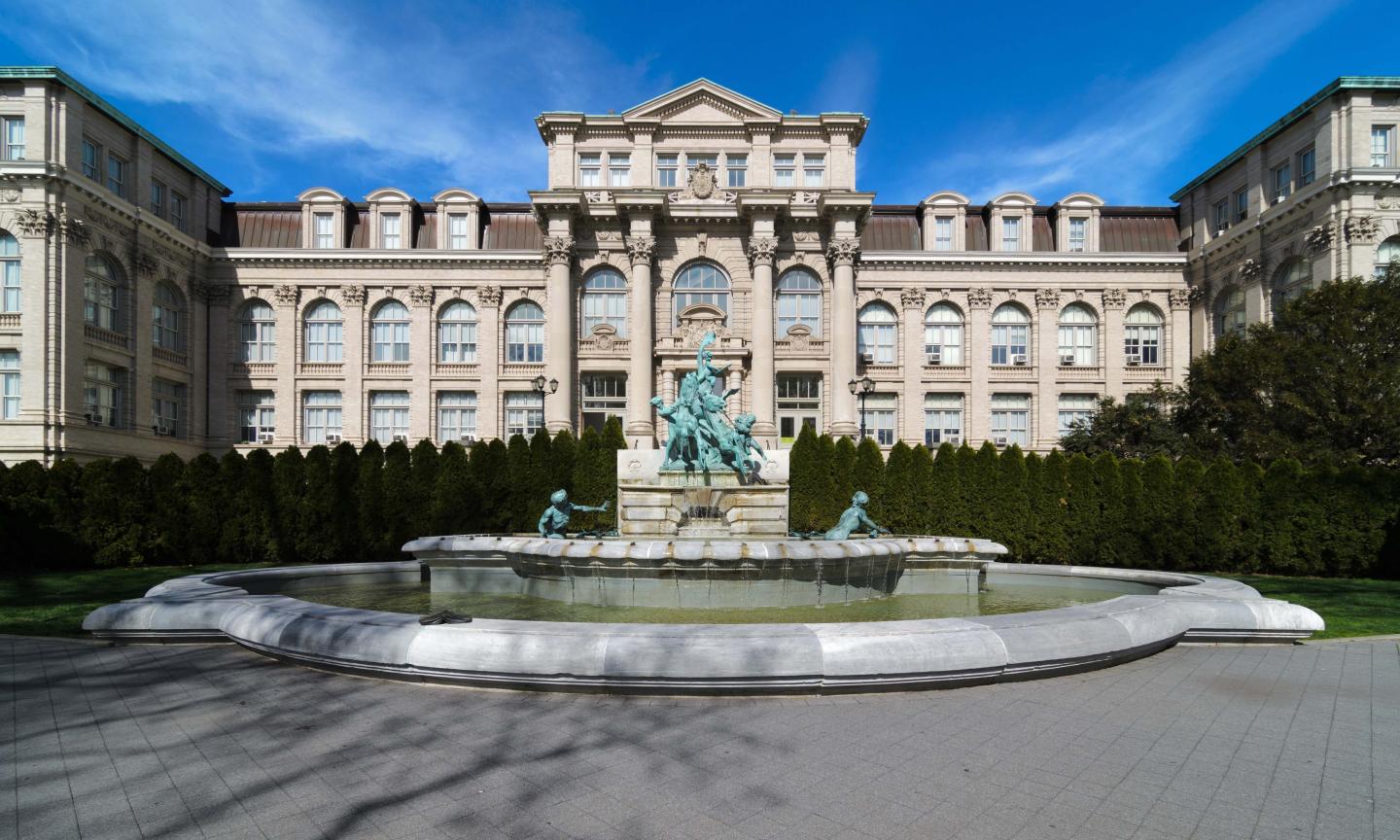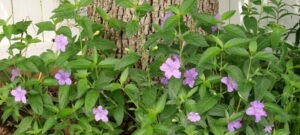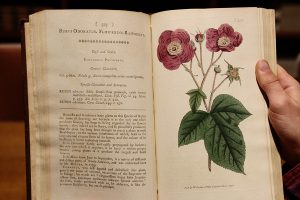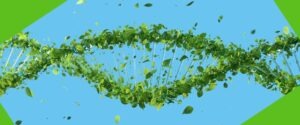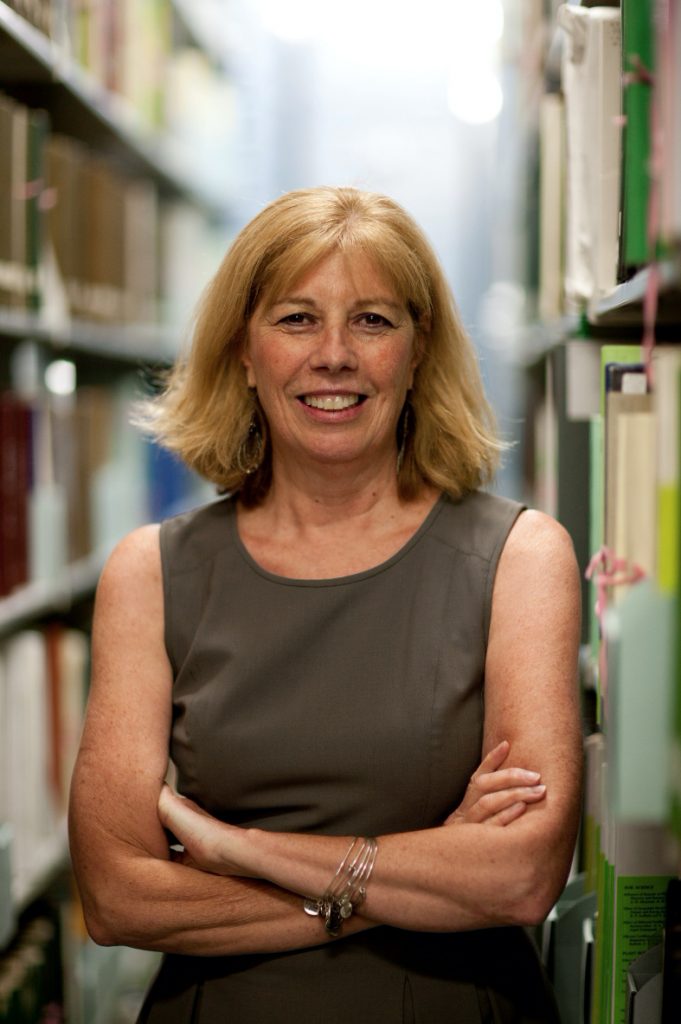
What is the origin of your interest in libraries and the LuEsther T. Mertz Library specifically?
I did a work/study program in college at the Sojourner Truth Library in New Paltz and decided that I really loved library work—then went on to work at various libraries at Columbia University while in Library School there. When my children were 3 months and 15 months I found I needed a job so I applied at NYBG and worked p/t until a full-time job became available. I studied art history and was fascinated to learn how entwined art and exploration and discovery are. Later in my career I became responsible for the exhibits in the Art Gallery as they related to plants and human endeavor, which was particularly gratifying.
What are the strengths of the Library’s collection?
The Mertz Library is particularly strong in the literature of South and Central America and has a very strong collection of mycology, which correlates with the strength of the herbarium collections and the expertise of the Science Curators; but it also has an amazing collection of rare and early herbals and pharmacopoeias and materials relating to the history of science.
What do you find most interesting about the Library? Is there a hidden gem within the collection? What is something only you know about the collection?
I’ve held so many positions in the Library from Serials Clerk to Special Collections Librarian and Archivist that I am pretty familiar with all the amazing collections—from the photo vault and microscope collections as well as the books and journals, and I can state with confidence that there are too many hidden gems to list—from books with book plates from the library of the Medici to a sketch of the HMS Beagle tucked in a book that once belonged to Charles Darwin. With such a large collection, I would discover a hidden gem every day. It was one of the joys of working there.

What are the most compelling and challenging aspects of your job? What is one of the most valuable things you’ve learned through the years?
Probably one of the most challenging aspects of my job was to meet the demand for digital access to knowledge, and to balance the demand for that information with the constantly shrinking budget. I also learned the value and importance of collaboration and how imperative it is to be open to new ideas.
In what ways has the collection grown during your tenure and what is one of the ways that it is currently growing that warrants particular attention?
We’ve built a large and powerful digital collection which requires a high level of care and curation, similar to the level of the physical collections, but the digital seems almost invisible so it was difficult to get adequate funding and support. We need to keep growing the digital collections and provide open access to this research material. During the COVID crisis we learned how important is was to have access to electronic content when the physical library was unavailable to us.
How is the William & Lynda Steere Herbarium valuable to the Library’s collection?
Researchers come from around the globe to use the collections of the Steere Herbarium and the Mertz Library so having the two adjacent helps facilitate research. Both collections are critical for biodiversity and taxonomic research but also for examining some of the world’s most pressing environmental issues like the climate crisis, food security, habitat loss, invasive species, and a myriad of other topics. It’s important to continue to grow these collections.
How is the Library helping to preserve the past, present, and future of biodiversity?
By providing greater access to the collections, and in particular, contributing content to the Biodiversity Heritage Library (BHL) will assure greater access to the literature to researchers around the globe, which in turn will impact the future of biodiversity.
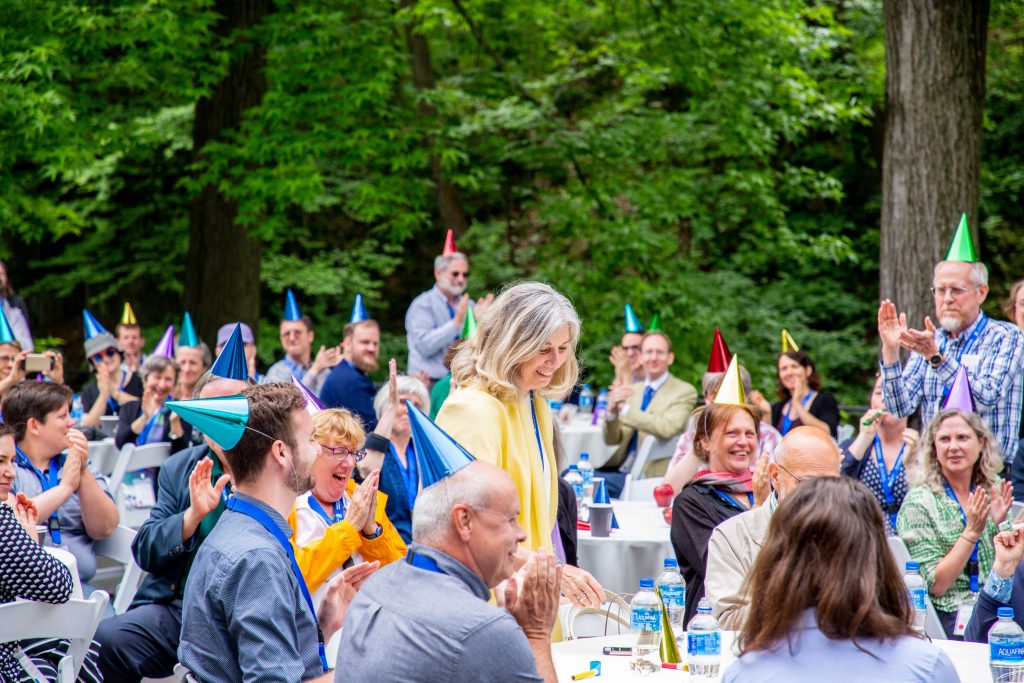
Where do you see botany/horticulture libraries in the future? How do you see them evolving with the times?
Libraries need to promote and leverage their expertise and collections to raise awareness of, and contribute to a better understanding of complex research, global and social problems, and encourage a better awareness of the natural world.
If you were given a free week with the collection, entirely extra time, what would you do?
Ha-ha—this is my favorite question—because now that I am retired with Emeritus status I will be in the Library working in the collections—curating the botanical art collection and exploring more thoroughly the other special collections—there are so many stories to tell.
Susan Fraser recently retired from her position as the Thomas J. Hubbard Vice President and Director of the LuEsther T. Mertz Library at the New York Botanical Garden after 37 years with the Library.

